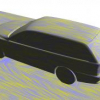Free Online Productivity Tools
i2Speak
i2Symbol
i2OCR
iTex2Img
iWeb2Print
iWeb2Shot
i2Type
iPdf2Split
iPdf2Merge
i2Bopomofo
i2Arabic
i2Style
i2Image
i2PDF
iLatex2Rtf
Sci2ools
122
Voted
VIS
2004
IEEE
2004
IEEE
On the Role of Color in the Perception of Motion in Animated Visualizations
Although luminance contrast plays a predominant role in motion perception, significant additional effects are introduced by chromatic contrasts. In this paper, relevant results from psychophysical and physiological research are described to clarify the role of color in motion detection. Interpreting these psychophysical experiments, we propose guidelines for the design of animated visualizations and a practical calibration procedure that improves the reliability of motion representation. The usefulness of the guidelines is demonstrated for a number of applications such as texture-based flow visualization, graph and tree visualization, and kinetic visualization. CR Categories: I.3.3 [Computer Graphics]: Picture/Image Generation; I.3.7 [Computer Graphics]: Three-Dimensional Graphics and Realism--Color, shading, shadowing, and texture
Computer Graphics | Practical Calibration Procedure | Texture-based Flow Visualization | VIS 2004 | Visualization |
Related Content
| Added | 05 Nov 2009 |
| Updated | 05 Nov 2009 |
| Type | Conference |
| Year | 2004 |
| Where | VIS |
| Authors | Daniel Weiskopf |
Comments (0)

